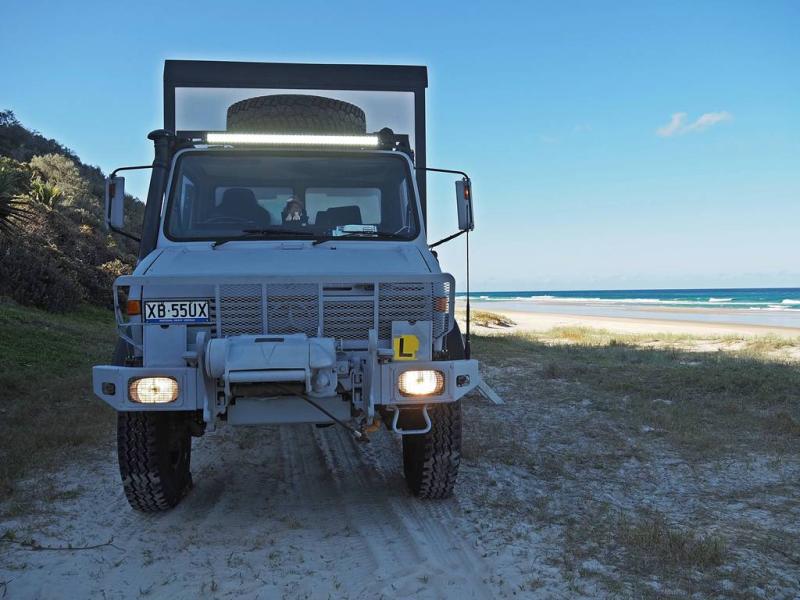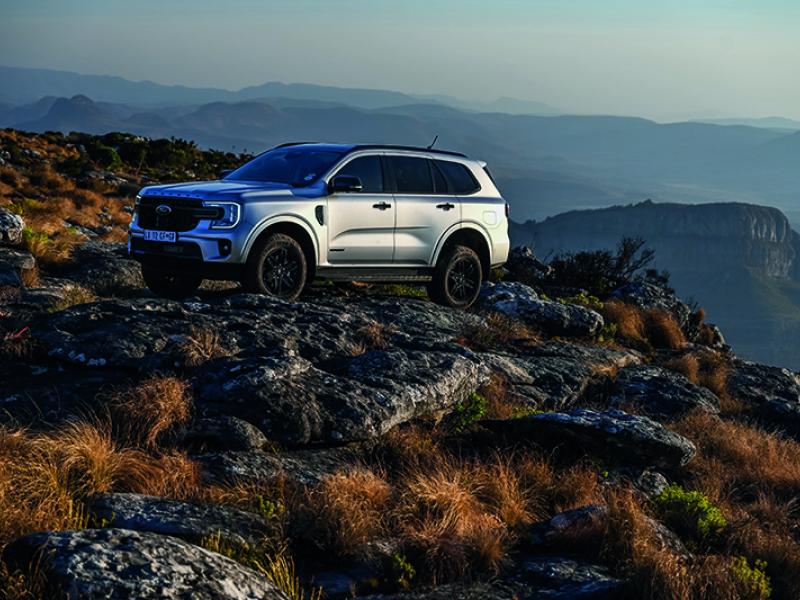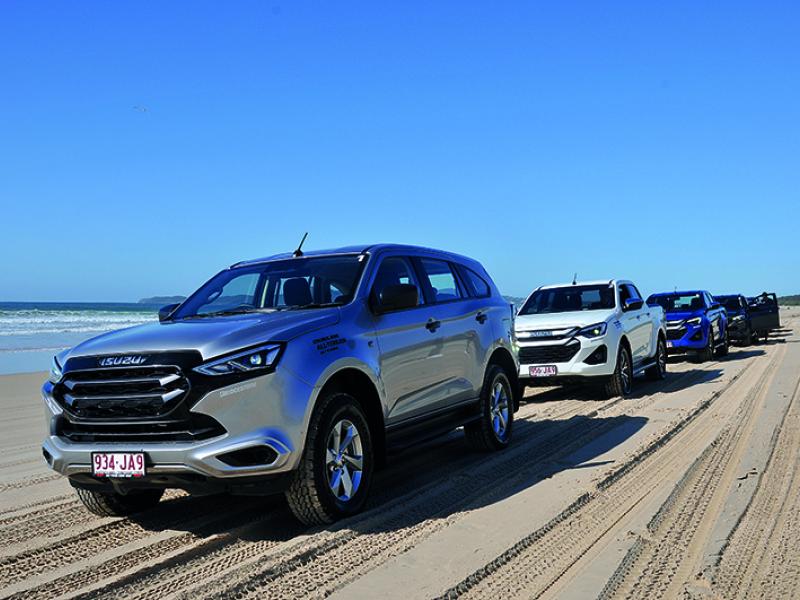After driving 2,700kms in two days to get to Alice Springs for the 2024 Finke Desert Race, Kiwi photographer Mike Peffers and mate Jack Talbot had time to take a more leisurely drive back to Sydney via the South Australian outback. Here’s his story.
We headed out of Alice Springs late on Kings Birthday to get some km under our belt before heading into the outback proper early the next day. Emerging from our swags at daybreak at our night stop, a free camping area at one of the ubiquitous roadhouses that line the Aussie highways, we headed across the border into South Australia.
Jack has done multiple trips through this part of the outback in the past. We planned to discover new areas he had not been to in the past. It wouldn’t be long before we would tick one off. Turning off the A87 at Mount Willoughby Station, leaving sealed roads behind for a few days, we drove the Painted Desert Road en route to the remote town of Oodnadatta.
The featureless landscape gradually changed as the multi coloured Arckaringa Hills emerged in the distance. Driving through the hills, we arrived at the main lookout. Stretching out before us was a technicolour moonscape which was once a seabed some 80 million years ago.
Driving into Oodnadatta, the locally famous Pink Roadhouse was a welcome stop to refuel the Navara and have a cold beer. The whole roadhouse was pink, inside and out. Even the original pickup truck sported the pink paint. The story goes that the current owner’s wife had a particular liking for the colour pink, so the idea was born to paint it accordingly to keep her happy living so far off the beaten track.
Oodnadatta was the northern terminus for the Central Australian Railway, more commonly known as The Ghan, until it was extended to Alice Springs in 1929. Before the extension was completed, camel trains would take goods north.
The Ghan followed the original camel train route from Adelaide. The stops dotted along the route became the water tank stops that would replenish the steam trains that plied the route, before the advent of the diesel locomotives. The Ghan took its name from the Afghan camel drivers who helped explore Australia’s interior in the 19th century. The Ghan became The Old Ghan in 1980 when it was abandoned with the opening of a new standard gauge line, spanning almost 3,000kms from Adelaide to Darwin.
Heading south on the Oodnadatta Track towards our overnight camp spot at Coward Creek, the road closely followed The Old Ghan. Late in the afternoon, we stopped at the 587-metre long Algebuckina Rail Bridge. Built of wrought iron, it opened in 1892. It is a popular camp spot for Aussies and their off-road caravans, along with the swarms of massive flies living near the river’s edge.
The setting sun made the red expanse seem almost other worldly. Virtually featureless in every direction, except for the occasional abandoned shepherd’s cottage, the road stretched out endlessly ahead of us through the desert. We had to keep a sharp eye out for kangaroos that come out of nowhere at dusk, making them a real hazard as they bound across the roads.
With another two hours of night driving ahead of us to reach Coward Creek, we stopped for dinner at a quintessential Aussie outback pub, the William Creek Hotel. The place was buzzing, with plenty of punters in for their evening meal, including some others like us who were also returning home from a weekend at the Finke.
We arrived at the Coward Creek Camp Ground around 9.30pm with a hot shower beckoning. After quickly rolling out the swags at our designated camp spot, the aptly named “Larrikins”, it was off to find the wood fired showers, under a clear, moonless sky, with the Milky Way stretching directly overhead. We awoke to a magic outback sunrise over the date palms that dot the property. As well as being one of The Old Ghan stops with a well-preserved station master’s cottage, Coward Creek has a natural hot spring which is tucked amongst the local flora which can be accessed via the tracks that have been established around the campground.
We joined some fellow campers for a coffee and a highly recommended fresh date scone at the “Date Shak”, operated by the campground owners. One of the campers told us we had to visit the bakery at Farina. Jack had never heard of the town, but we were told it was on our route south to Clare.
After a quick stop to look at Lake Eyre South, an extension of the massive Lake Eyre salt lake basin, we came across the dystopian Mutonia Sculpture Park. The first thing you see are two planes sticking out of the ground. It was established by retired mechanic Robin Cooke who used scrap auto parts to create his anti-nuclear inspired sculptures, to protest a nearby uranium mine.
A short while later, we rolled into Marree, the home of the Lake Eyre Yacht Club, to fuel up. There was a decent queue waiting for the pumps as Marree is a major outback crossroad, with the Oodnadatta Track heading up to the Northern Territory, the Birdsville Track up to Queensland in the northeast, and the Outback Track down to Adeliade in the south.
In 1884, Marree was the most northern stop of The Old Ghan. A lot of the old rail infrastructure is still around the town, including a couple of the original diesel locomotives, which are optimistically up for sale. Local artists have created sculptures reflecting its camel train and railroad history, making it a worthwhile stop to stretch your legs before getting back on the road.
Some 50-odd kilometres south of Marree, signage started to appear, “come to visit the Famous Farina Bakery”. Turning off the Outback Track, we headed a few km down the road into Farina. It was like we had just driven onto a spaghetti western movie set, complete with abandoned buildings, from a post office, to the grandly named “Intercontinental Hotel”. In the middle of town was the bakery, which was attracting a steady stream of customers. The bakery originally used an underground “scotch” oven and it is still in use today. It is only open for two months a year and is staffed by volunteers who travel from all around Australia, who in return get free camping at the local campground.
Settled in 1878, Farina was the most northern stop on the Central Australian Railway before Marree usurped it just two years after the first train pulled into town. The town’s population of 600 gradually dwindled away to nothing in 1967. Since 2008, a local group has been working to restore the town, with the bakery at the heart of the project.
Heading south towards our night stop, the Clare Valley, and the first bed in a few days, we reached the Flinders Ranges, and back onto sealed roads. As we got closer to civilisation there were a lot more kangaroos appearing at dusk, including a few on the side of the road that had come off second best to the road trains driving the route. After checking into the motel, it was into town for a wood fired pizza and a glass of decent Clare Valley Shiraz.
We still had some 1,400 kms to drive from Clare to Sydney airport, and two days to do it. Staying off the main highways for a while, we crossed the Murray River on the Morgan River Ferry. One of the towns on the river is Waikerie, which has turned its grain silos into massive artworks, getting local artists to paint murals that can be seen for miles. Other towns along the river route have been inspired and created their own silo artworks. The last night stop was in West Wyalong, and the comfy Royal Hotel with its $15.00 “Chicken Shnitty” dinner.
Before getting into Sydney, we had one more pilgrimage to make – Mount Panorama. Driving the Navara around the track in both directions was a fitting way to finish an epic road trip. After a couple of hours in the National Motor Racing Museum, it was off to Sydney Airport and the flight home.







